Foot fungus is considered a fairly common disease. Everyone is prone to mycosis. Infection occurs by touching an infected area of skin or a damaged nail particle. A doctor should treat the foot fungus. You will select an effective remedy that will quickly eliminate the disease.

Causes of the fungus
Leg fungus, which must be treated by an experienced specialist, can occur for the following reasons:
- The water in the pool, shower or sauna are breeding grounds for various infections. When visiting these places, you must bring your personal shoes. Walking barefoot on the floor is not recommended.
- A humid environment is ideal for rapid growth and multiplication of the fungus.
- Dried fungal particles can exist for several years. As soon as they enter a favorable environment, they will begin to actively develop.
- This disease is often caused by metabolic disorders or endocrine system problems.
- Often the disease manifests itself in those whose feet are deformed or blood circulation is impaired.
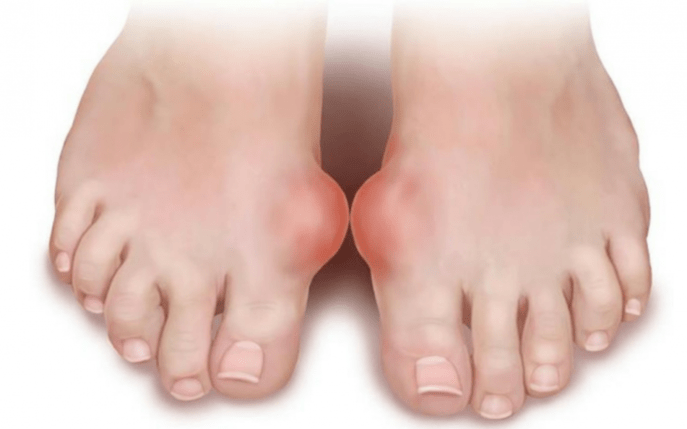
Symptoms of fungi
Symptoms of the disease are determined by its type. There are several ways:
- scaly
- dyshidrotic;
- intertrigue;
- onychomycosis of the feet;
- candidiasis
Flaky shape
Initially, the disease occurs in one leg. If you don't start treatment on time, switch to the second foot. Symptoms of the disease should be considered:
- the appearance of redness on the skin;
- peeling of the cover;
- itching (not always associated with the disease).
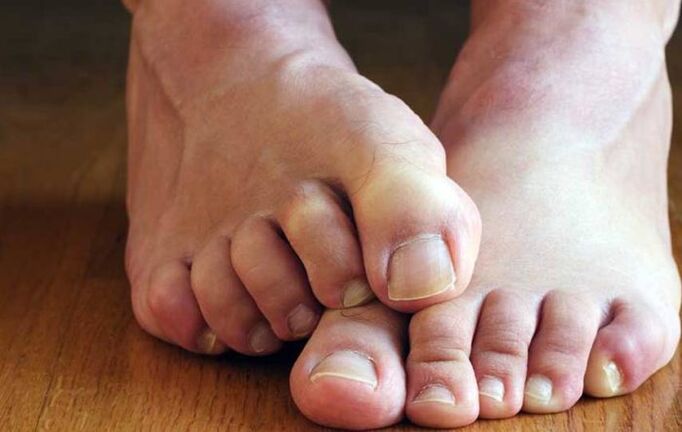
Often a person who is sick with a squamous infection does not bother at all. Therefore, with this form, a doctor is consulted only when the infection has spread to both legs.
Dyshidrotic form
This disease is characterized by the appearance of small bubbles (2 to 8 mm in diameter) on the arch of the foot. As a general rule, they are formed where the leg does not touch the floor when walking. After a while, the small bulbs merge with the large ones and open. The result is the erosion of the skin.
The process extends from the arch to the inner side of the leg. At the site of the opening of the bubbles, a large focus of erosion occurs, and then diaper rash. Often times, a person feels itchy and painful in the places where the bubbles form.
After the erosion heals and dries, flaking will occur at this location. If you do not start treatment in time, the dyshidrotic form of the disease will become scaly.
Intertriga shape
This disease can occur on its own or in the context of the scaly form of the fungus. Usually the process begins with cracks in the skin between the fourth and fifth toes.
Symptoms of the disease should be considered:
- the appearance of a white border resulting from exfoliation of the epidermis;
- the appearance of suppurating wounds between the fingers;
- burning sensation and pain;
- constant itching.
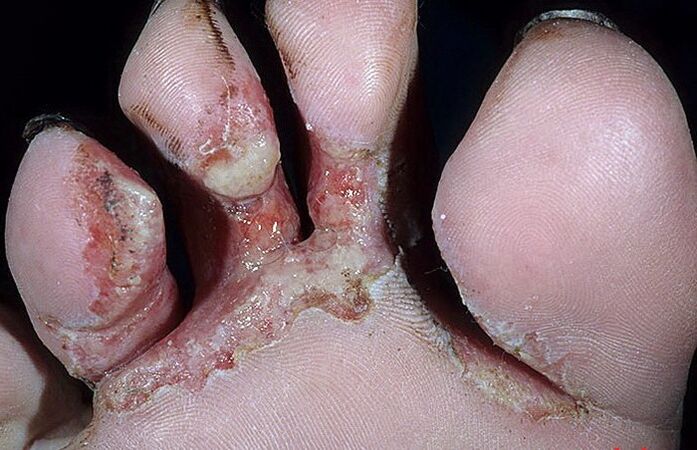
The intertrigious form of yeast infection in the legs has a chronic course. In winter, the disease subsides and in summer it worsens. Lack of proper treatment contributes to the loss of the protective properties of the skin and the penetration of streptococcal infection into the body. As a result, a pustular inflammatory process develops.
Onychomycosis of the feet
This disease is a lesion of the platinum of the nail. The disease develops from the free edge of the nail. First, yellow spots and streaks appear on the plate.
With hypertrophic onychomycosis, the nail becomes thicker and yellow. It crumbles and crumbles easily. The skin underneath is thickened.
In the atrophic form of the disease, the nail plate becomes thinner and gradually collapses. A layer of keratinized skin forms under it.
Candida injury
In this way, the lesions are usually located between the third and fourth toes, as well as between the fourth and fifth toes. Symptoms of the disease are as follows:
- the skin is edematous and red in color;
- abscesses or blisters appear near the focus;
- an edge of the exfoliated top layer of skin forms around the redness.
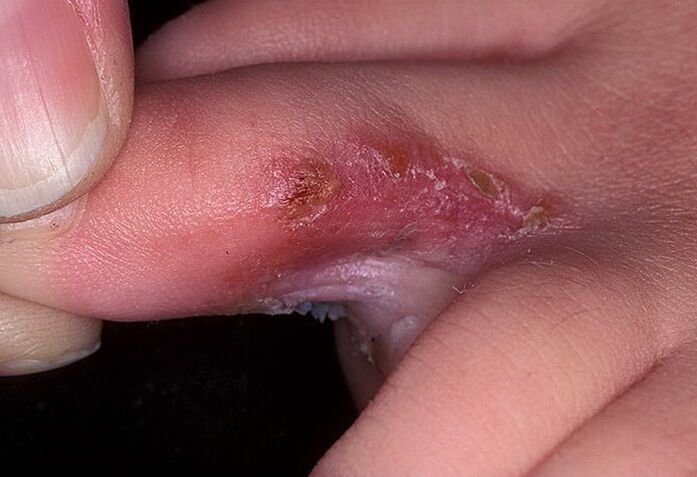
You should visit your doctor as soon as you notice the first signs. They can cause itching, burning, pain, or peeling of the skin. After an examination, a specialist will diagnose and prescribe treatment. If you ignore the symptoms, the infection will affect the entire foot, including the nail plate. In this case, it will be difficult to cure the fungus on the legs. Therefore, it is not worth starting the disease.
How to treat foot fungus
A doctor can choose an effective course. It is necessary to consult a specialist and express the symptoms that bother you. An experienced specialist will quickly determine how to treat a foot fungus.
Medicines
You can find many different products in pharmacies.
Specialty medications are antifungal agents that inhibit the growth of the fungus. They are available in the form of tablets and capsules, ointments and gel, suspension, syrup and solution. The dose, dosage regimen, and duration of treatment are determined by the attending physician.
Home remedies
Fungal diseases are chronic and do not pose a great danger to human health.
Traditional methods of treatment are effective only in the early stages. During this period, the symptoms of the disease are not yet observed, it can be difficult to recognize the fungus. That is why home remedies are best used in addition to drug treatment.
The most common method of getting rid of fungus is with a vinegar bath. It has a surprising antiseptic effect. The bathroom is done like this:
- Wash your feet with lukewarm water and pat them dry with a towel.
- Pour a wine vinegar solution into a container.
- Lower your legs and hold your pelvis for 3 to 5 minutes.
- Take your legs out and put on your socks soaked in a vinegar solution.

Treatment is best done at bedtime. Then the socks should be removed in the morning.
Baking soda and sea salt baths are also effective in treating feet. They are done like this:
- Dissolve a tablespoon of salt and soda in a sufficient volume of water.
- Lower your feet to the solution.
- After 15 minutes, wash your feet with lukewarm water.
It is better to wash your feet with a decoction of herbs. For this, calendula, medicinal verbena, oak bark are suitable. The broth is made as follows:
- The ingredients are mixed in equal amounts.
- 3 tablespoons of the mixture are poured into a glass of water.
- The container is put on a small heat.
- Heats up in 20 minutes.
- The solution is filtered and cooled.
- The broth is used to rinse the feet and for lotions.
You can prepare an ointment for the affected areas of the feet. For this, pork fat and sifted ash are extracted. The ingredients are mixed until smooth. The ointment is applied to the clean skin of the feet in the morning and at night.
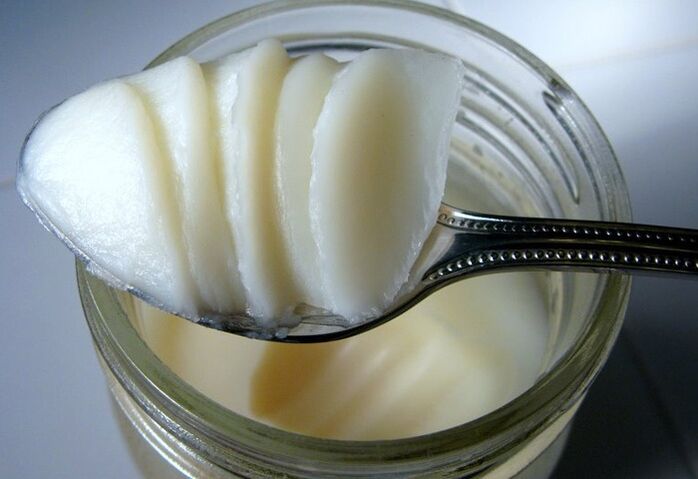
Disease prevention
Any disease is easier to prevent than to cure. Therefore, avoid wearing closed shoes all the time. Excessive sweating of the feet often leads to the development of fungal diseases.
It should be borne in mind that the fungus easily tolerates low temperatures. After entering a normal environment, it is activated and begins to develop rapidly. Therefore, freezing is not a prophylaxis or a method of fighting bacteria.
Boiling can kill the fungus. To prevent diseases, it is necessary to wash clothes at a high temperature and then iron them.
To avoid fungal infection, you need to wear only your own things and shoes, carefully sterilize the tools for pedicure and manicure. By following simple rules, you can protect yourself from a disease that is so difficult to cure.
















